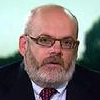Federal Reserve Chairwoman Janet Yellen complained recently that “a cacophony of voices” from senior U.S. central bankers had often made her life difficult.
This tumult is likely to get worse under her likely successor, Fed governor Jerome Powell, according to a monetary policy expert. Powell is widely expected to win congressional approval for the post.
“You are going to hear a more vocal Fed roster...expect some of the bank presidents to be more assertive,” said Vincent Reinhart, a former top staffer at the central bank under Alan Greenspan, and now chief economist for Standish Mellon Asset Management Company in Boston.
Yellen and her No. 2, Stanley Fischer, were two of the most prominent macro-economists in the U.S. and other Fed economists deferred to them, Reinhart said.
But with Powell not being an economist, there is likely to be a “battle of them to see who is the chief economist at the Federal Reserve,” Reinhart said.
The primary debate at the Fed at the moment is whether the central bank should be raising rates even though inflation is so subdued. There are doubts about the Phillips curve model showing low unemployment will eventually lead to higher inflation.
Some Fed watchers argued the Fed staff may step into the limelight, having been overshadowed by Ben Bernanke and then Yellen.
Paul Ashworth, chief U.S. economist at Capital Economics, agreed Powell will rely on more input from the regional bank presidents because he doesn’t have his own really strong opinions.
Ashworth said there is nothing wrong with debate among the central bankers, but that there is a risk the market might get “wrong footed” in trying to decipher the message from a chorus of individuals.
“When you hear too many disparate voices, it can be hard to work out where the policy consensus is and if that changes,” Ashworth said.
Here are three key Fed regional presidents likely to assert their voices and where they stand on the key issue of the day: whether the Fed should keep raising interest rates with inflation so low.
San Francisco Fed President John Williams: Williams is already a bit of a rock star at the Fed, having replaced Yellen as the head of the San Francisco Fed. Williams is backing continued gradual rate hikes. He’d likely back one in December and three more next year given current data. He thinks low inflation readings are overstated. Williams will be a voting Federal Open Market Committee member next year.
Cleveland Fed President Loretta Mester: Mester is perhaps just a bit more hawkish than Williams. She has expressed concern inflation may overshoot the Fed’s 2% target. Mester, who is also a voter in 2018, may be pushing for four rate hikes in the calendar year, said Kevin Cummings, senior U.S. economist at NatWest.
Chicago Fed President Charles Evans: Evans is the leading dove on the Fed, and has suggested the Fed take a break from raising rates to make sure inflation gets back to 2%. He thinks the Fed will lose credibility with markets if it doesn’t allow inflation to rise about its 2% target. He returns to the rotational FOMC in 2019.
“


